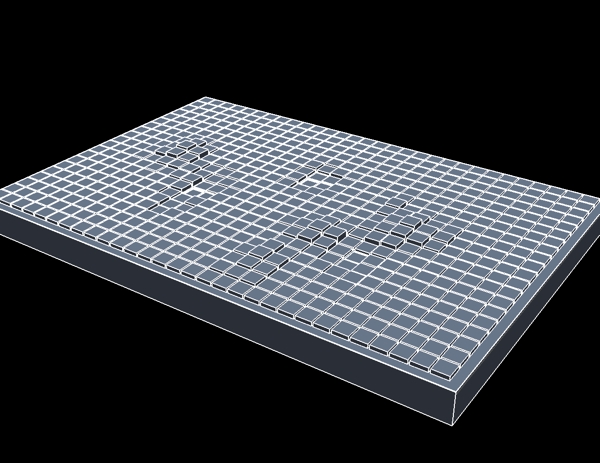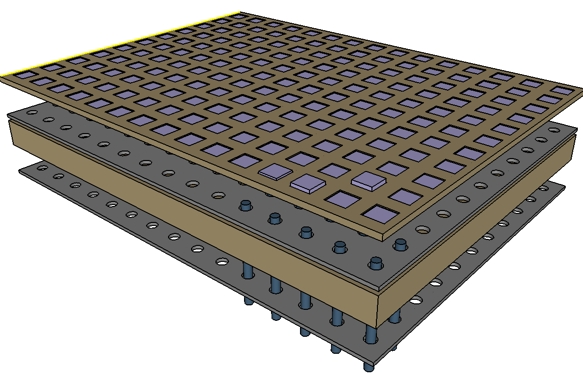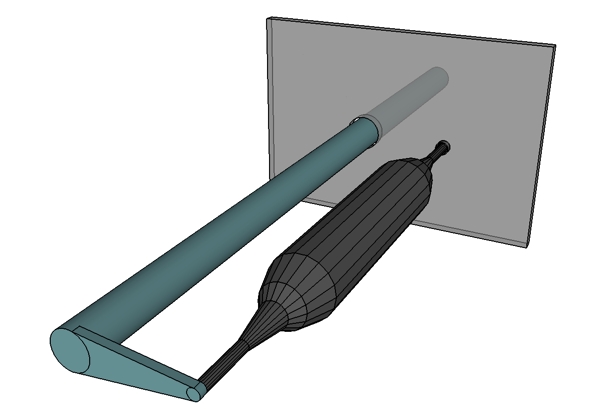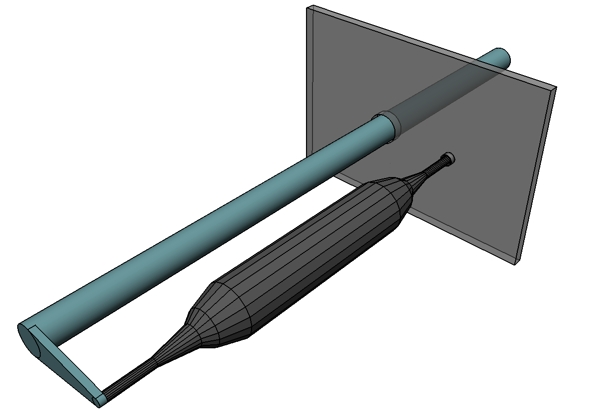Table of Contents
Design research for ProjectLyta
Contents
See also the topic Project Lyta Materials Research
Cabinet and Frame Construction
Exterior
The cabinet will be a robust, sculpted form about 3 x 2 x 0.4 meters in size. The surface will be covered with a membrane designed to enhance the tactile qualities of the interaction. Underneath this membrane, the installation will consist of a frame articulated with a system of closely spaced plates. The plates are to be coupled to an internal mechanism actuating the local inward and outward displacement. A depiction of one of the simplest possible skeletons:
Interior
The internal structure will consist of a set of staggered frames. These will be designed to isolate the surface from the actuating mechanism, and to provide a mounting substrate for the actuators themselves. The isolation frame will also serve to brace and align the mechanical translation mechanism, depicted here as a rod:
Quicktime Animated interior sequence.
Electro-Mechanics
Some collected research on actuation and sensing is available under Project Lyta Materials Research
Actuation
Human Touch Sensing for Actuators in Haptic Interfaces: Good overview of quantification of human tactile and kinesthetic sensing capabilities: http://www-cdr.stanford.edu/touch/actuators/Actuators_Sensing_Summary.html
After surveying many possible solutions, there are two main categories of actuation we are considering: electrical and pneumatic. (Those we have found to be best adapted to our needs will be described in more detail here time permitting.)
In autumn 2004 we have decided for a pneumatic system from Merlin: http://www.merlinsystemscorp.com/
Illustration of system integration with muscle-type actuators:
Sensing
Among the options we are considering are:
- Position-dependent switches
- Pressure sensors (force-sensing resistors)
- Stretch sensors
- Other position encoders
Although still looking around, most probably our chosen system will be the FSR pressure sensors from LuSense (http://www.lusense.com)
product description: http://www.b2blocator.co.uk/build/items/00/69/108.html
Tactile (Soft) Materials
Over the front panel of the installation a membrane will be stretched in order to improve the tactile qualities of the tablet. This material and design research is underway by Rachel Wingfield, Maja Kuzmanovic, Evelina Kusaite. The membrane might be designed in 3 layers:
- outer layer made from a strong, transparent, elastic membrane such as the 'technoGel': http://www.technogel.it/, a shape memory polymer that, when pressed moulds itself to the shape of each individual, in 3 axis
- chromic or light emiting materials to enchance the visual feedback of the touch - when pressed emits colour light (see ProjectLytaMaterialsResearch and ActiveMaterials for more information)
- potentially a piezoelectric sensor-actuator composite (such as the adaptive materials from http://www.empa.ch/) - although this proves not to be feasible in the given time frame
Electronic Control and Networking
This will involve a set of microcontrollers and network interfaces provided by Merlin and FoAM. A computer will be embedded in the installation (potentially running custom built software as well as Max/MSP or PD.) This part of the installation will be decided on in the coming months.
Use Research
Research results from the 2002 FoAM public Lyta prototype event in Antwerp at MUKHA:
- the 'pin cushion' idea is playful enough even at very low resolution (10-15cm)
- when the players know that they are interacting with a person, they tend to become more engaged, playful, but also aggressive
- the more displacement of the pins, the more force people tended to use
- rather than transmitting touch, this installation transmitted force
- attention span lasted for not more than 5 minutes at the time. Larger groups 1-2 minutes.
- better resolution is needed for transmission of shape data
- a membrane is crucial for structural integrity
- smooth and subtle motion could diminish violent tendencies
- not much instruction is needed. The interaction seemed to be clear enough, with just one notice ' wash your hands and touch the walls'
- …





